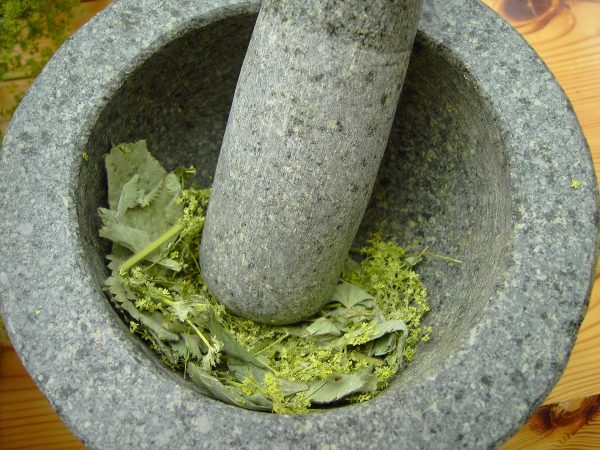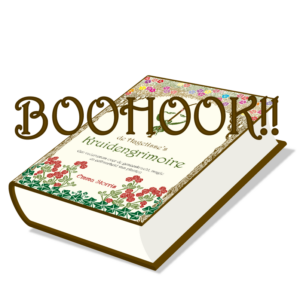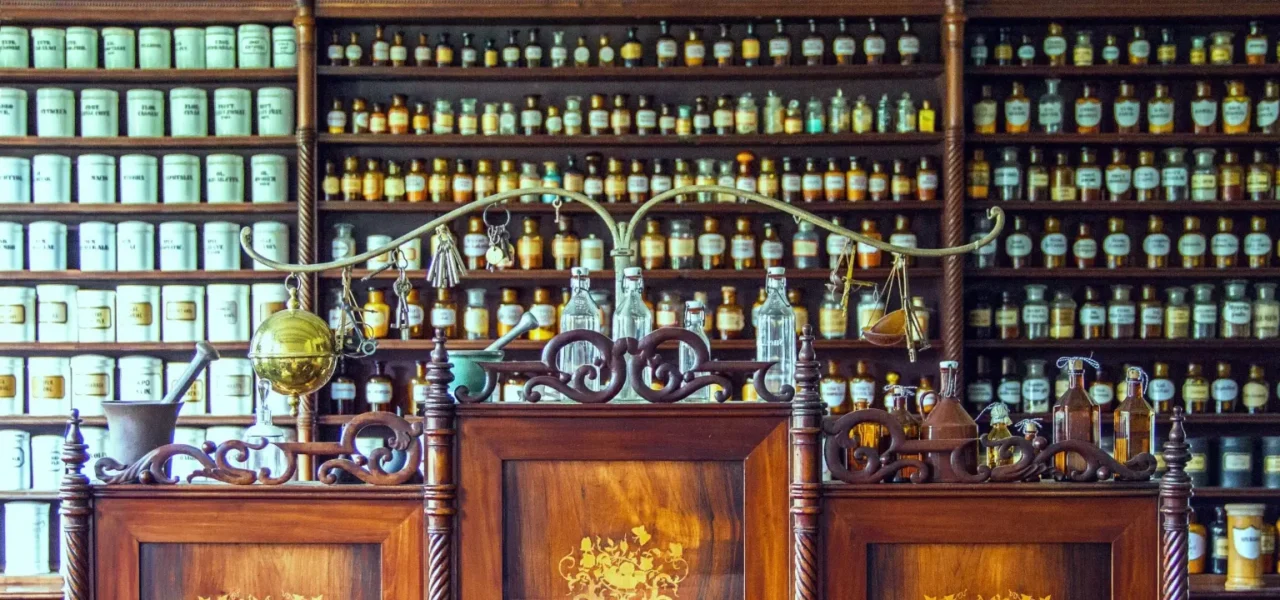How to make a tincture from medicinal plants: the traditional method

In the meantime, your hands are probably itching to get started and create your own tincture from medicinal plants. Today we are going to discuss how to do that using the traditional method. Or maybe your hands don’t itch and you’re only seeing hurdles.
If the latter is the case, I can reassure you. There isn’t much that can go wrong and if things don’t quite go the way they were supposed to, it’s no disaster. You just learn from what went wrong and start over. With this type of work, it is especially important that you do it often. That you clock up some mileage, gain experience and find your own way in this process.
Some information to start with: about measuring and menstruum
As I wrote earlier, the traditional method is mainly a matter of using your eyes. You check whether you have put enough herb in your pot and you check whether you have added enough menstruum by looking at it closely. As we discussed last time, the menstruum is important for macerating a successful tincture. With the right menstruum you will tease the constituents right out of the plants. In this blog we’re keeping it simple. We’ll use a 190-proof alcohol for the fresh plants and an 80 to 100-proof alcohol for the dried plants.
You may be wondering what proof means. The term stems from an 18th century way of standardising ethanol content in liquid. Ethanol is the scientific word for alcohol, that stuff that is found in alcoholic beverages and has the intoxicating effect. If you want to know more about this, check out this page. For us, it is enough to know that the alcohol percentage in a menstruum is roughly half the proof. So a 190-proof alcoholic liquid contains 95% ethanol and a 100-proof alcoholic liquid contains 50% ethanol. 190-proof alcohol is the highest percentage you can achieve, so if a recipe says 100% alcohol, that means your menstruum consists completely of 190-proof, nothing else added. Need help sourcing your alcohol? Read this blog.
Utensils you will need for making an herbal tincture
A small reminder: what did you need again? My standard equipment for a traditional tincture looks like this:
- A smooth wooden cutting board
- A sharp knife
- A mortar
- A well sealable jar and two bowls, jars or pots to decant for decantation and pressing
- Filter materials, such as a funnel, sieve and coffee filters, muslin cloth or cheese cloth
- Bottles of dark glass which can be closed properly
- Optionally labels
If you have not read the previous blog, it is useful to do so now. In that blog, I give you some useful tips about what to take into consideration when purchasing materials.
The most important tools for a herbalist
I haven’t mentioned the most important herbalist tools before, but now that we are about to get started, it’s time I did. Firstly, there is the notebook and pen (or pencil). It’s always useful to be able to look back at what you did. Whether something went horribly wrong or you just brewed the most powerful tincture ever, the more you take notes, the more you can fine-tune your herbal preparations.
Secondly, there’s ourselves. Our experience and, above all, our relationship with a plant is what gives our preparations an advantage over factory-produced preparations. A herbalist does more than follow dry instructions. A herbalist enters into an alliance with the plant that he or she processes. This alliance already starts when we start harvesting. If you don’t know what I’m talking about, don’t worry. I’ll probably write a blog on the subject at some point. For now, getting you to practice is key. But I think most of you understand what I’m referring to.
- make a traditional tincture using fresh plants
- make a traditional tincture using dried plants
- store and use the tinctures you've made
You need a paid membership to view this content
Basic Membership is free!




